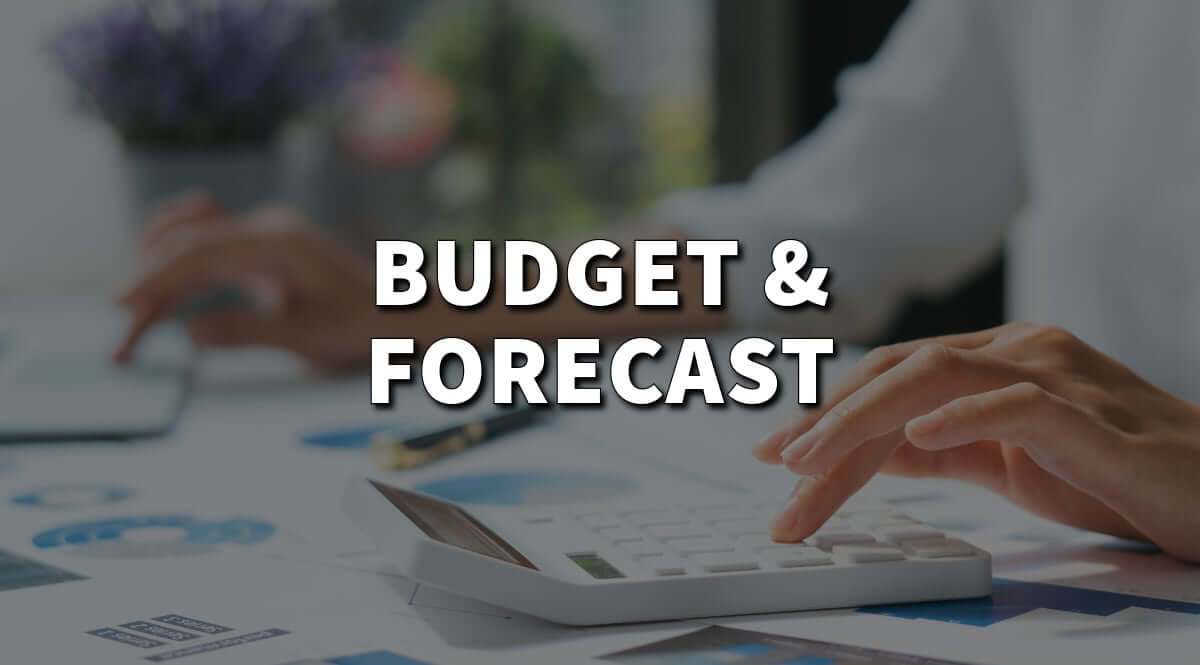
What is the difference between budget and forecast exactly?
Key Takeaways:
- Budgeting outlines specific short-term financial goals and serves as a foundation for financial planning.
- Forecasting focuses on predicting future financial performance and offers insights for both short-term and long-term objectives.
- Budgeting is more operationally oriented, while forecasting takes a comprehensive view of financial outcomes.
- Budgets precede short-term forecasts and help measure progress towards long-term financial objectives.
Have you ever thought about the main difference between budget and forecast? Why should you learn to distinguish these two terms if you’re in the finance field?
Effective financial planning for businesses relies on two important tools: budgeting and forecasting. Budgeting lays the foundation for financial planning by carefully outlining revenue targets and expenditures for future periods.
Meanwhile, forecasting assesses the accuracy of these financial projections and estimates potential income. Budgeting and forecasting help companies plan their finances and reach their financial goals.
This article will explore the intricacies of budgeting and forecasting, highlighting their pivotal roles in financial planning. Let’s get all the basics before getting the budget vs forecast comparison!
Budgeting – explained
Budgeting is a financial planning process companies use to set their goals for a specific period, usually a year. It involves making estimates for:
- Expected revenues and expenses.
- Long-awaited cash flows.
- Forecasts for reducing debt.
The budget is crucial for comparing actual results with planned ones and analyzing cost budgeting and performance differences.
It serves as a reflection of a company’s financial status, summarizing cash flow expectations and its overarching objectives.
Typically, organizations engage in an annual review and update of their budgets, a critical aspect of budgetary control.
Strong focus on performance measurement and variance analysis

Some businesses are flexible, allowing adjustments throughout the year to adapt to changing circumstances. They strongly focus on performance measurement and variance analysis as part of their budgetary control practices.
This approach ensures that the budget remains a dynamic tool for effective financial management.
What is the Budgeting Process like?
Budgeting control process helps organizations plan and prepare budgets for a specific time period while monitoring financial discipline.
This comprehensive approach includes reviewing past budgets, with identification and forecasting revenue for the coming period, and allocating specific amounts to various cost categories.
Budgeting control helps companies stick to their financial plan. It also helps them keep track of their financial performance. This is what financial experts can do during a specific time period.
But before learning the difference between budget and forecast, let’s learn more about the forecasting process, shall we?
Forecasting – explained
Financial forecasting, a cornerstone of strategic business planning, represents a complex process essential for a company’s sustained success.
It revolves around predicting a company’s prospective financial performance drawing valuable insights from a thorough analysis of historical data.
This method accurately predicts revenue forecasting for the short and long term, with a focus on forecasting accuracy.
What are the features of financial forecasting?
One of the distinguishing features of financial forecasting is its inherent dynamism. This process allows for regular updates and adjustments to forecasts, keeping them aligned with changing business operations.
This flexibility helps managers quickly respond to new opportunities and challenges, making informed decisions that move the company forward.
Through financial forecasting, organizations gain visibility into potential financial outcomes and sharpen their competitive edge by proactively shaping strategies and resource allocation.
It helps with managing finances and making smart decisions. This promotes flexibility, strength, and long-term progress in a constantly changing business world.
The Stages of Financial Forecasting:

In crafting a financial forecast report, a company undertakes several vital steps. Initially, it establishes a designated time frame for the forecast and precisely gathers all pertinent historical financial records and required documentation within that timeframe.
Additionally, the report delves into accurately forecasting critical data, including sales forecasts, by considering prevailing market conditions.
It keeps track of money flow, earnings reports, and financial statements, comparing predictions with market changes.
The Role of Annual Budget in Financial Planning:
An annual budget is central to guiding a company’s financial planning. It sets goals and plans for the next year, including predictions for money coming in, money going out, and reducing debt.
After the fiscal year concludes, the annual budget is a benchmark for evaluating actual results against forward-looking data.
The Sequence: Budget vs Short-term Forecast:
Typically, an annual budget precedes short-term forecasts, providing a long-term financial framework. Short-term forecasts monitor the company’s immediate alignment with financial goals, ensuring effective planning and control.
Leveraging Long-term Budgets for Forward-looking Data:
Long-term budgeting often uses historical indicators from previous annual budgets to inform projections.
This sequential approach guides companies in charting their financial course and measuring progress toward long-term financial objectives. In this dynamic process, forward-looking data remains paramount.
What is the key difference between budget and forecast?

Now that you’ve learned more about budgeting and forecasting, let’s learn the key difference between budget and forecast! First, budgeting and forecasting represent distinct financial planning processes with crucial disparities.
A budget is a plan made by business owners. It has goals like sales targets, revenue milestones, and operating expenses. It helps achieve short-term objectives, like quarterly growth.
This process aligns with the immediate focus on business performance. Conversely, financial forecasting extends its purview beyond the budget’s confines. Budgets focus on short-term goals for supply chain and operations, while financial forecasting takes a broader perspective.
It checks if experts could achieve the planned goals within the given time, including short-term and long-term objectives.
Conclusion
Creating a budget as part of strategic planning establishes a roadmap for achieving specific, often short-term milestones. Financial dynamic forecasting predicts how the budget will affect the company’s performance and align with long-term goals in planning.
The post What is the difference between budget and forecast exactly? appeared first on FinanceBrokerage.
